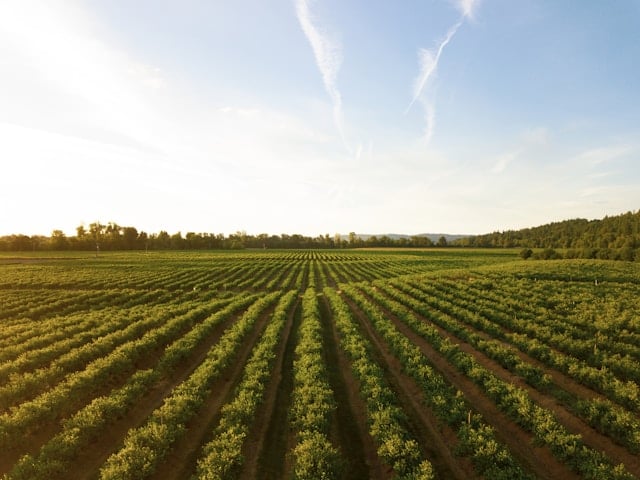 The agricultural sector, responsible for feeding a rapidly growing global population, is also a significant contributor to greenhouse gas emissions.
The agricultural sector, responsible for feeding a rapidly growing global population, is also a significant contributor to greenhouse gas emissions.
As the world grapples with the challenges of climate change, integrating renewable energy sources into farming operations has emerged as a pivotal strategy to enhance sustainability and reduce carbon footprints.
By harnessing solar and wind power, farms can not only decrease their reliance on fossil fuels but also improve their overall efficiency and resilience.
The Versatility and Scalability of Solar Energy in Agriculture
Solar energy is one of the most accessible and widely adopted renewable energy sources in agriculture. Solar panels can be installed on rooftops of farm buildings, on unused land, or even integrated into farming equipment.
These panels convert sunlight into electricity, which can power various farm operations, from irrigation systems to machinery. One of the key advantages of solar energy is its scalability; it can be utilized by small family farms as well as large industrial agricultural operations.
For instance, solar-powered water pumps can provide a reliable and sustainable solution for irrigation, especially in remote areas lacking access to the conventional power grid. Moreover, solar energy can be stored in batteries, ensuring a continuous power supply even during cloudy days or nighttime, thus enhancing energy security on farms.
Harnessing Wind Power for Sustainable Farming Operations
Wind power is another renewable energy source with significant potential for agricultural applications. Wind turbines can be installed on farmland to generate electricity. This electricity can either be used on-site or sold back to the grid, providing an additional revenue stream for farmers.
Wind power is particularly effective in areas with consistent and strong wind patterns. By integrating wind turbines into their operations, farmers can significantly reduce their energy costs and environmental impact.
Additionally, wind energy systems require relatively little land, allowing farmers to continue using their land for crops or livestock while benefiting from renewable energy generation.
Stefan Soloviev’s Visionary Leadership in Renewable Energy for Agriculture
A prime example of commitment to integrating renewable energy into agricultural operations is the work of Stefan Soloviev. His dedication to sustainability extends beyond the fields, as he has also invested in wind and solar energy projects across his holdings.
Soloviev’s visionary approach includes not only using renewable energy to power his farms but also contributing to the broader adoption of these technologies in the agricultural sector. By leveraging his resources and influence, Soloviev is helping to pave the way for a more sustainable and energy-efficient future in farming.
The benefits of integrating renewable energy into agriculture extend beyond reducing carbon footprints. Renewable energy sources can help farmers cut operational costs, increase energy independence, and enhance the resilience of their operations against fluctuating energy prices and supply disruptions.
For example, farms that rely on renewable energy can continue operating without incurring exorbitant energy costs during periods of high energy demand or limited supply. This stability is particularly crucial for small and medium-sized farms that may otherwise struggle with the volatility of energy markets.
Moreover, renewable energy projects on farms can create additional economic opportunities. Installing and maintaining solar panels and wind turbines require skilled labor, which can generate jobs in rural areas.
Furthermore, by producing surplus energy and selling it back to the grid, farmers can diversify their income streams, making their operations more financially robust.
Government Incentives and the Future of Renewable Energy in Agriculture
Governments and organizations worldwide are recognizing the importance of renewable energy in agriculture and are offering various incentives to encourage adoption.
These incentives include grants, tax credits, and low-interest loans for farmers who invest in renewable energy systems. Such support can significantly offset the initial costs of installation, making renewable energy solutions more accessible to farmers of all sizes.
In conclusion, the integration of renewable energy sources like solar and wind power into farming operations offers a promising pathway to sustainable agriculture.
Renewable energy can help transform the agricultural sector into a model of environmental stewardship and economic resilience by reducing reliance on fossil fuels, lowering operational costs, and enhancing energy security.
Visionaries like Stefan Soloviev’s commitment highlight these technologies’ potential to drive meaningful change. As renewable energy becomes more prevalent in farming, it paves the way for a future where agriculture not only feeds the world but also protects and preserves the environment for generations to come.
Interesting Related Article: “Indian Agriculture and Digitization“

